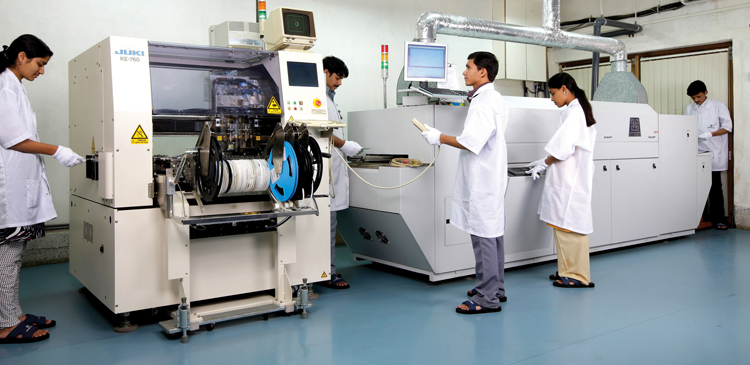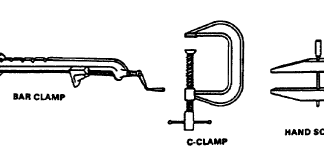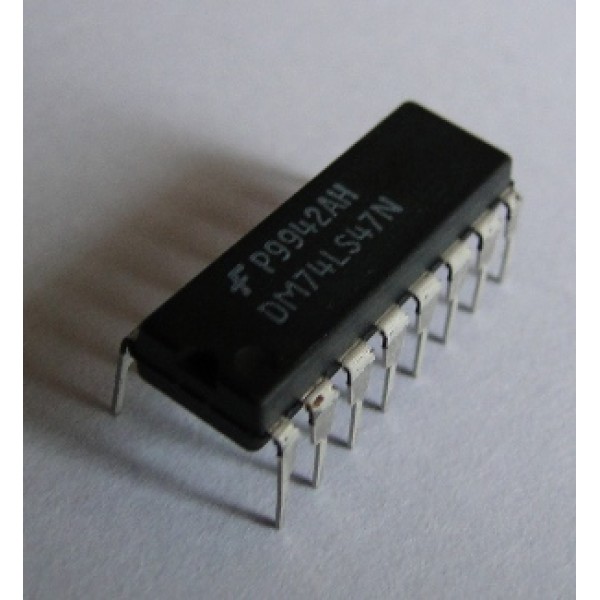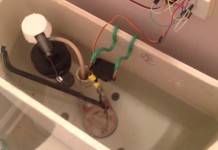Electronics manufacturing industry in India needs to grow at a much faster pace due to the ever-growing demand for consumer electronics, IT and telecom goods. This demand is expected to grow to US$ 400 billion by 2020, according to some estimates. In case manufacturing in India does not keep pace with the demand, country’s import bill for electronics will exceed the import bill for crude oil.
Amarpreet Singh, manager–manufacturing, Centum Electronics says, “To support this demand and reduce the currency outflow from India, Indian government has come up with a very detailed industrial policy that encourages manufacturing industry in India. Indian manufacturing industry is growing and so are the skill requirements to support electronics industry.”
Four broad fields for manufacturing
In electronics manufacturing value chain, there are four broad fields where electronics engineers fit in, namely, electronics tool development software industry, design organisations (who use these tools to develop electronics designs), original equipment manufacturers (OEMs, who use the designs and integrate them in their product systems themselves or through electronics manufacturing services providers) and, finally, the qualification and failure analysis labs, according to Ankan Mitra, vice president, SMTA India Chapter.
 |
Software tools industry for electronics design and manufacturing, and second, components, PCBs and system design houses are the two major fields where opportunities for engineers exist at present. Mitra says, “There is a huge industry for people with an electronics background, but it is aligned towards software tools development for electronics design industry. There is also a huge requirement for talented engineers in design companies.”
Next come the OEMs, who use services of all these design companies to manufacture their products in their own factories or outsource it to electronic manufacturing services (EMS) companies. The fourth broad field to make a career in is failure analysis and qualification labs in India. Mitra informs, “In case of field failures, specialist engineers come into picture. Field engineers are specialised engineers who identify issues and report problems faced by customers and service engineers. They are in-charge of carrying out critical repairs on faulty machines and they play an important role in the electronics manufacturing field as well.”
Apart from these, there are component suppliers or traders who exist across this value chain. Mitra says, “Engineers procure components during the NPI cycle, manufacturing cycle and even during field failures. These are the five different layers, with the component supplier organisations being a parallel layer, which constitute different segments in the electronics manufacturing industry. Each segment provides different opportunities for engineers.”
From design, production, test to SMT
The opportunities in electronics manufacturing industry are immense for fresh engineers as well as experienced professionals. “Entry-level roles vary widely depending on the company, products and geographies. But, usually, it involves assisting a team of mid-level managers who work on product development and manufacturing,” informs Kaustubh Nande, manager–marketing, ANSYS Software (ANSYS India).
Sharing his views on opportunities in this field, T. Anand, principal consultant, Knewron says, “Opportunities exist in design, testing and assembly domain for engineers interested in these fields. However, entry-level roles in this domain focus on hands-on work rather than pure design or coding assignments. This means, one must understand and appreciate the importance of practical work experience before progressing in this field and making long-term career.”
Surface mount technology (SMT) provides a wide and diverse field in electronics industry, either directly or through ancillary producers, explains Vivek Madhukar, COO of Times Business Solutions, which operates TimesJobs.com. He says, “The biggest employers are in IT, manufacturing/engineering, healthcare/biotechnology and auto sectors based in and around Bengaluru, Pune and Delhi. Salaries start at the lower end, but hands-on experience definitely improves one’s growth prospects, with earnings reaching over 1.5 million rupees with adequate exposure.”
 |
 |
 |
| Fig. 1: Top industries hiring professionals for electronics manufacaturing | Fig. 2: Top locations for jobs in electronics manufacturing |
Fig. 3: Salary break-up for engineers in electronics manufacturing segment |
Amit Bhargava, managing director, Asha Electronics believes the key to boost manufacturing sector lies with fresh graduates. He says, “Engineers need to realise that the real fun is in creating, that is, manufacturing. Young graduates can fire up the industry with their energy and ideas. Entering the realms of purchase, production, quality and marketing will energise these streams.” He adds, “As production gets complex so will marketing, and this will help young graduates pick up lucrative assignments and incentives from companies. Starting as trainees, and setting themselves up in fields they excel in, will boost their growth prospects.”
“Most of our designs are SMT-based and need high skill levels in assembly. Being a design house, we do hand-soldering as much as possible and depend highly on practical experience,” says Anand. He adds, “At Knewron we welcome engineers from all strata; however, each one needs to demonstrate his worth before coming on board.” Talking about his company, Bhargava informs, “Engineers are as such encouraged in our organisation to take up jobs in all functions. The field being complex, engineers are best suited for it.”
Centum Electronics recruits as well as encourages fresher engineers to work on their state-of-the-art SMT lines. Srinivasa Bharadwaj, manager-engineering, Centum Electronics says, “As the SMT machines involve understanding of electronics assembly processes as well as maintenance of the pick-and-place equipment, where a lot of mechanical movement of the parts is involved, we prefer to have engineers from electronics and mechanical streams. Engineers from electrical stream also fit in.”
Why a career in SMT
Fresh engineers interested in learning equipment functionality and process engineering are suitable for SMT lines. In addition, engineers with an aptitude of equipment maintenance can also take up the job of an SMT engineer. Singh says, “As it is the core of an electronics manufacturing industry, there is a lot of focus on the technological developments in this area. This makes it more interesting and challenging for any of the fresh engineers to take up SMT as a career option.”
 |
According to Singh, SMT forms the back bone of electronics assembly line and is therefore a very important area for an electronics manufacturing plant. He says, “Though there is a requirement of experienced engineering resources running SMT assembly lines, it is very important to have a significant pool of fresh engineers working on SMT lines too.” To that Bharadwaj adds, “Engineering graduates with a good aptitude for learning basic manufacturing processes like screen printing, solder-paste inspection, pick and place, reflow soldering and automatic inspections are preferred. It is very challenging for a fresh electronics engineer to work on fully-automatic computer-controlled equipment. The industry offers various roles, which include responsibilities like process engineering and equipment maintenance of the SMT lines.”
What an SMT engineer learns
Talking about the exposure for an SMT engineer, Singh shares, “Since SMT assembly is the core of electronic assembly, an SMT engineer gets exposed to critical process areas like tooling design (such as stencil, palettes), pick-and-place programming, reflow profiling, AOI programming and x-ray inspection.” Shifting to the equipment side, he adds, “Here, the areas where an engineer would get an insight into are breakdown maintenance, equipment effectiveness, equipment capabilities and new equipment selection, to name a few.”
 |
Learning about statistical process controls for critical processes like solder-paste printing, for instance, using very-high-end inspection equipment is another interesting area in SMT. “SMT first-pass yield is critical in electronic assembly. Hence, invariably, the SMT engineers have to learn about the process to bring in yield improvements. Therefore there is opportunity to learn and use statistical techniques to bring forth yield improvements,” informs Bharadwaj.
Aptitude, right attitude and soft skills
According to Anand, for SMT-assembly and manufacturing-based jobs, people must have practical experience in soldering. He informs, “Even a fresher should not only have worked during his college assignments but even otherwise have practiced enough to demonstrate that he is interested in this domain. Assembly, troubleshooting and testing are some of the widely sought skills for this domain.”
A good understanding of basic electronics is required. Mitra says, “It’s not just the engineering degree, a potential candidate needs to understand how a design looks like and how to interpret the design so that during manufacturing, in case there are some issues, these can be reported. That’s the kind of value add that people look for in profiles of the engineers.” He adds, “There are also multiple industry certifications that recruiters tend to look at. There are some certifications that engineers might have acquired in the past which could help them stand out among other candidates.”
From a product-development perspective, physics and engineering tool knowledge are extremely important, informs Nande. He says, “If you are on the manufacturing side, obviously process and supply-chain knowledge is useful. Increasingly, soft skills and good communication skills are also seen as differentiators in promoting engineers to managerial cadre.”
Demand areas
According to the data provided by TimesJobs.com, the top industries hiring engineers are in the manufacturing and engineering sector with about 28 per cent share of jobs, followed by the IT-software/software services sector with a share of 26 per cent. IT-hardware/semiconductor and healthcare/biotechnology sectors provide 15 per cent and 12 per cent of the jobs, respectively.
Apart from Bengaluru that features in the list of top locations for jobs in electronics manufacturing and SMT sector with 45 per cent share, figures indicate Pune, Delhi and Chennai provide 12 per cent, 12 per cent and 10 per cent of the jobs, respectively. Remaining jobs are scattered in other locations.
Pay package
This industry will pay well, but only if you have patience. As in any other manufacturing industry, here too, you must be ready to toil, informs Bhargava. Creation of product does not happen without hard work, and that satisfaction is the ultimate one. Talking about his organisation, he says, “Freshers start at about 120,000 rupees per annum, and an experience of a couple of years can fetch them anything between 180,000 and 300,000 rupees, depending on the field and competence of the person.” Some reputed organisations offer as much as 220,000 rupees per annum to a fresh trainee engineer.
According to the data provided by TimesJobs.com, 50 per cent of the jobs are for entry-level engineers in the manufacturing domain, and they are paid anywhere between 150,000 and 250,000 rupees, depending on their skills and capabilities. Once they gain experience and elevate to junior-engineer level, their package can become anywhere between 350,000 and 700,000 rupees. Currently, about 26 per cent of the jobs are for fairly experienced, junior-level professionals. About 10 per cent of the jobs are for mid-level and senior-level experts each in the manufacturing domain.
Expert advice
Anand believes practise is the key. He says, “If you rely only on college/institutional knowledge and practicals, this field may not be a good option for you. People who are interested in making career in SMT and electronics manufacturing industry must show extra-curricular efforts (in these areas) to demonstrate their worth. Doing this ensures their faster progress and growth in industry, once they join.”
Interested candidates need to be aligned to the requirements of the firms in India. Students should get more involved and try to identify the industry sector they wish to join, suggests Mitra. Giving an example of SMTA student chapter, he says, “SMTA’s student chapters are currently located outside India. Within South East Asia, like Malaysia and Thailand, students take advantage of the local chapters to establish relation with the industry.” Talking about India, he adds, “We are trying to establish student chapters in cooperation with some institutes, specifically in the southern part of the country. If students are interested, they can approach the SMTA contacts, and we can acquaint them with the industry requirements.”
By 2020 jobs will hit mainstream
At present 75 per cent to 80 per cent of the electronics is imported and only about 20 per cent is manufactured in India, to fulfill its internal demand. So, obviously, there is a huge scope to manufacture within India. Mitra says, “This is the reason why all the top multinational electronics design or manufacturing companies have their offices in India already since the last decade or so. They are just waiting for the regulatory clearances and then they will expand in India the way they had initially planned to.” With this being the situation, it definitely makes sense that people align themselves to this industry. Though the industry is picking up, it has not yet moved into that level of maturity. There will be tremendous job opportunities in the coming years, probably by 2020, besides those already existing today.














